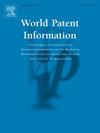基于llm的改进多标签分层专利分类
IF 2.2
Q2 INFORMATION SCIENCE & LIBRARY SCIENCE
引用次数: 0
摘要
对多标签文档进行分类一直是一项具有挑战性的任务,特别是当标签遵循层次结构时。这种复杂性增加了准确预测多个相关标签的难度,通常限制了整体分类性能。为了解决这些挑战并提高分层多标签分类系统的准确性,我们引入了一种利用大型语言模型(llm)的新型管道。通过结合量化技术并通过较小的矩阵优化权重更新,我们提高了计算效率和可扩展性。与目前最先进的模型相比,我们的方法在准确性方面有所提高。在这项工作中,我们将该管道应用于专利文件,重点关注使用基于转换器的体系结构的多标签分层文本分类问题。CPC(合作专利分类)标签的层次结构通过基于图的分类法得以保留,从而能够更有效地处理专利类别。我们的模型在USPTO-70k数据集上进行了训练和评估,我们在各种指标上取得了实质性的改进,包括精度、召回率、f1分数和AUC。本文章由计算机程序翻译,如有差异,请以英文原文为准。
Improved multi-label hierarchical patent classification using LLMs
Classifying multi-label documents has always been a challenging task, especially when the labels follow a hierarchical structure. This complexity increases the difficulty of accurately predicting multiple interrelated labels, often limiting the overall classification performance. To address these challenges and improve the accuracy of hierarchical multi-label classification systems, we introduce a novel pipeline leveraging large language models (LLMs). By incorporating quantization techniques and optimizing weight updates through smaller matrices, we improve computational efficiency and scalability. Our approach demonstrates an improvement in accuracy compared to current state-of-the-art models. In this work, we apply this pipeline to patent documents, focusing on the multi-label hierarchical text classification problem using a transformer-based architecture. The hierarchical structure of the CPC (Cooperative Patent Classification) labels is preserved through a graph-based taxonomy, which enables more effective processing of patent categories. Our model is trained and evaluated on the USPTO-70k dataset, and we achieve substantial improvements across various metrics, including precision, recall, F1-score, and AUC.
求助全文
通过发布文献求助,成功后即可免费获取论文全文。
去求助
来源期刊

World Patent Information
INFORMATION SCIENCE & LIBRARY SCIENCE-
CiteScore
3.50
自引率
18.50%
发文量
40
期刊介绍:
The aim of World Patent Information is to provide a worldwide forum for the exchange of information between people working professionally in the field of Industrial Property information and documentation and to promote the widest possible use of the associated literature. Regular features include: papers concerned with all aspects of Industrial Property information and documentation; new regulations pertinent to Industrial Property information and documentation; short reports on relevant meetings and conferences; bibliographies, together with book and literature reviews.
 求助内容:
求助内容: 应助结果提醒方式:
应助结果提醒方式:


